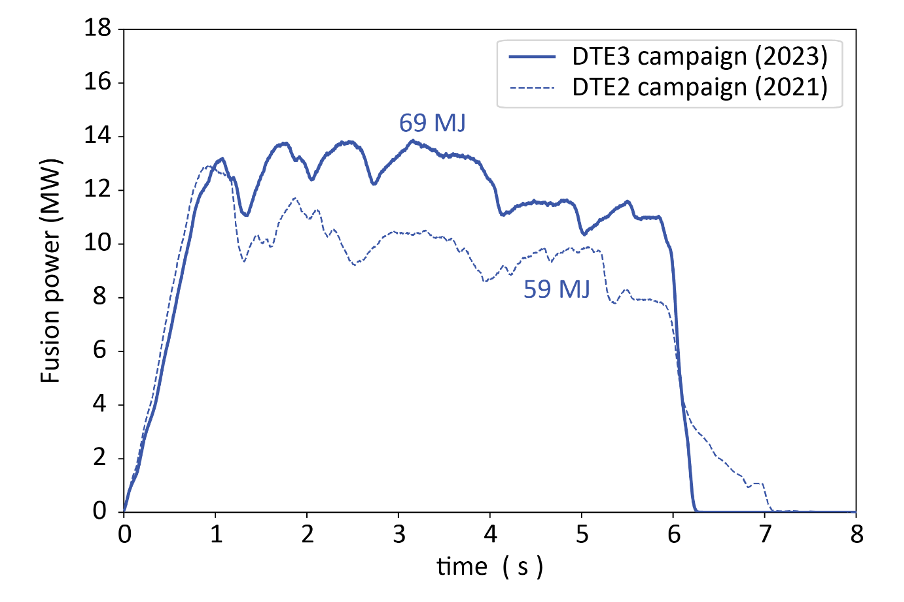In a major scientific achievement, European researchers at the Joint European Torus (JET) facility have set a new world energy record of 69 megajoules released in sustained and controlled fusion energy.
This result was achieved as part of an experimental campaign to test operating scenarios for future fusion machines under conditions as close as possible to those expected in ITER and other future fusion power plants. This result was possible through the intensive collaboration of an international team of scientists and engineers at JET and reflects the central role that JET plays in the realization of nuclear fusion as a future green, environmentally friendly energy source for future generations.

Deuterium-Tritium campaign DTE3
In September 2023, the third deuterium-tritium experimental campaign (DTE3) began at the UK Atomic Energy Authority’s (UKAEA) JET machine in Culham, UK, under the auspices of EUROfusion, the consortium coordinating fusion research in Europe. The goal was to test possible operating scenarios for the next large fusion machine ITER, under construction in southern France. JET is the only machine worldwide that can operate with the fuel of future fusion machines, in technical terms deuterium-tritium, like ITER, and the planned demonstration power plant DEMO.
Reproducible energy record
Using advanced operating scenarios, the researchers set a new record of fusion energy of 69.26 Megajoules in their fusion experiments. For this energy record, obtained in a six-second pulse, only 0.21 milligrams of fuel was fused in nuclear fusion reactions. To generate the same amount of energy from fossil fuel requires 10 million times more fuel, in this case e.g. 2 kg of coal. The new achievement breaks the previous world records of 59 Megajoules (DTE2 in 2022) and 22.7 Megajoules (DTE1 in 1997), which were also obtained at JET. Scientists at JET were able to reliably reproduce the necessary fusion conditions for the new record in multiple experimental pulses, demonstrating that the complex fusion processes are well understood and mastered.

Testing operating scenarios for ITER
The experiments that surpassed JET’s previous fusion energy record came as a cherry on top of the cake during JET’s third and final set of deuterium-tritium experiments. The campaign was primarily designed to test crucial operating scenarios for ITER to optimize the chances for ITER’s success.
Crucial contribution of LPP-ERM/KMS to the success of these experiments
Essential for the record performance of the DTE3 experiments was the Ion-Cyclotron-Resonance-Heating (ICRH) system, which was during these experiments operated by a team of researchers from the Laboratory for Plasma Physics of the Royal Military Academy (LPP-ERM/KMS). Our team succeeded in further increasing the output of this heating system, leading to more heating power to reach the necessary ultra-high temperatures for the fusion reactions. In addition, the ICRH system also allowed to increase the stability of the experiments, leading to pulses with a maximum duration at high fusion power output. This DTE3 campaign was the first in which we have ever been able to test such high-performance scenarios in a deuterium-tritium environment.